Optimizing human movement requires clarity of description of movement
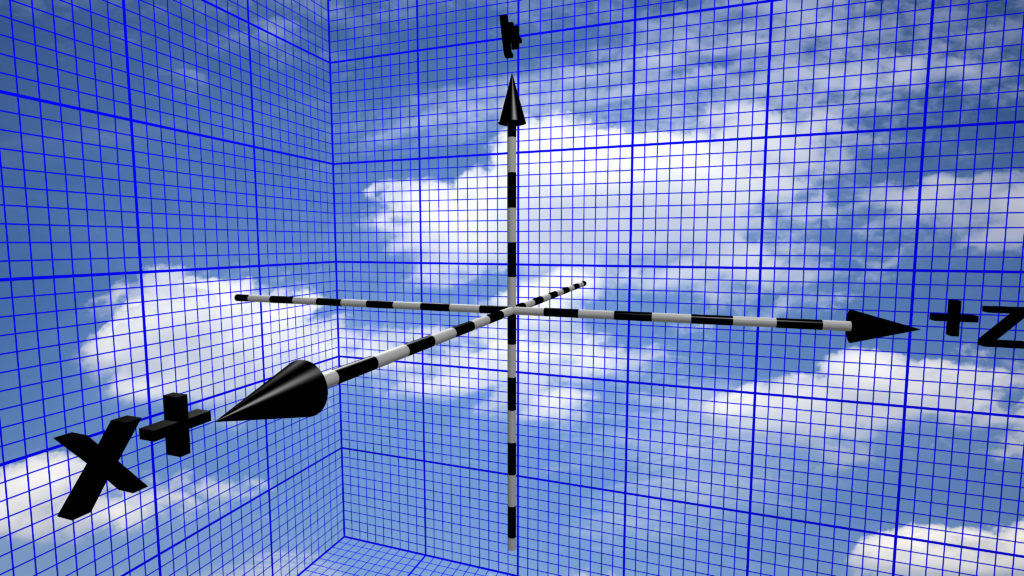
To know where you are going you must first know where you are.
To optimize human movement, analysis of human movement is required.
To identify optimal human movement clear qualitative and quantitative descriptions are needed.
When describing human movement confusion occurs when we fail to clearly identify a frame of reference and reference point.
A common description of a gait deviation is the individual is “hip hiking.” What is “hip hiking”? Is the thigh bone hiking? is the pelvic bone hiking? is the hiking during the stance phase or swing phase? We need a frame of reference and reference points.
A common description of a gait deviation is a “Trendelenburg sign.” This description confuses me. I am thinking is the patient is in an upside-down position that is used during a surgical procedure. Is there something wrong with superficial veins? Does he have a limp? Naming clinical tests and descriptions of movements after an individual is not helpful.
Describing gait deviation by pathology is not specific enough to direct treatment. Describing a person's gait as he/she is walking with a Parkinson's gait is very wide-ranging. Is there freezing; shuffling; festinating, all the above? The description of a “hemiplegic gait” is not very helpful. Whereas relative to vertical line there is a lateral shift of the sacrum (center of mass) towards the stance leg description of movement can provide direction for intervention.
Describing movement or motion requires using a frame of reference and a reference point. There are different frames of reference that are used to describe motion.
The Polar coordinate system is a 2-dimensional system in which each point on a plane is determined by a distance from a reference point and the angle of the reference point. It describes the movement, navigation, and travel. Interestingly indigenous people of Australia (Guugu Yimidhirr) use the polar coordinate system to describe human movement. They have no words for left and right. Instead, Guugu Yimidhirr speakers give all their descriptions and directions based on the fixed four cardinal points of the compass: north, south, east, and west. If I was providing Physical Therapy to a Guugu Yimidhirr I ask the individual to move your east arm/shoulder to the northeast instead of flexing your right arm/shoulder.
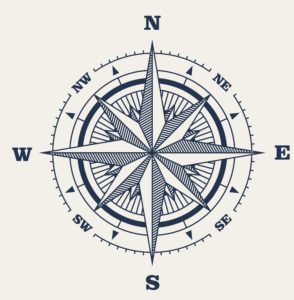
The allocentric frame of reference is describing motion with respect to other objects. For example, the person is moving relative towards or away from the window. The high jumper’s center of mass is passing under the bar and his pelvis passing over the bar.
An egocentric frame of reference motion is describing motion with respect to the individual's body axes of self, left-right, front-back, up-down.
There is consensus when describing human motion to use the coordinate system as a frame of reference. The cartesian coordinate system uses two perpendicular lines. We use it to specify a point in the 3-dimensional space.
Describing and analyzing human walking and running the coordinate system the frame of reference uses three perpendicular lines:
- Vertical line assumed to be a line of gravitational force - The body moves fore/aft or side to side relative to the vertical line.
- Horizontal line – The body moves up-down relative to the line of the horizon
- Line of progression – The body moves inward-outward relative to the line of progression.
Given these 3 lines of orientation then specific boney prominences are used as reference points to clearly describe human motion.
Boney Prominences Reference Points that can be used relative to the 3 lines of the coordinate system are:
Vertical line of reference:
When viewed from behind the following boney prominences relative to the line of vertical is the base of the neck top of the thoracic spine T1; the sacrum (assumed to be the center of mass of the body); and medial aspect of the heel during stance phase.
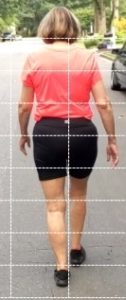

In the image on right, the vertical line passes thru the sacrum and the medial heel divides the body in half. The image on the left vertical line from the medial heel passes to the right of the sacrum, two-thirds of the body is to the left of the vertical line. There is asymmetrical movement during the stance phase on right versus the stance phase on left.
When viewed from the front the following boney prominences relative to the line of vertical are the top of the sternum; the belly button or belt buckle (assumed to be the center of mass of the body) and the medial aspect of the heel during the stance phase.
When viewed from the side the following body landmarks relative to the line of vertical are ear; the tip of the shoulder (acromioclavicular joint); hip joint axis, the trochanteric process of the thigh bone (assumed to be center of mass of the body), front of the lateral ankle bone; foot strike; and angle of foot/shoe relative to ground.
Horizontal line of reference:
When viewed from behind the following boney prominences relative to the line of the horizon are ears; tips of the shoulders; beltline (iliac crest of the pelvis); popliteal skin crease on the back of knees; the plantar plane of the heel bone; and the plantar plane of the metatarsal head.
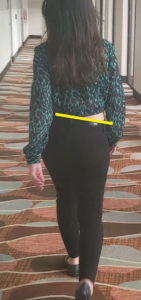
The image above the beltline (iliac crest of the pelvis) is more than 4° down from a horizontal line, this deviation is considered excessive contralateral pelvic drop during the stance phase on the left.
When viewed from the side the following boney prominences relative to the line of the horizon are beltline, iliac crest
Line of Progression:
When viewed from behind the following boney prominences relative to the line of progression are shoulders; arms; line bisecting the back of the thigh; feet; lateral toes; and big toe.
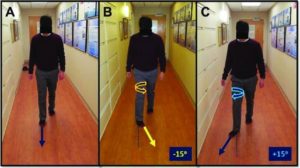
In the image above figure the foot on the right side of the body is in line with the line of progression; whereas figure B foot/leg on the right side of the body is turned inward relative to the line of progression; Figure C foot leg on right is turned outward relative to the line of progression.
Given the frame of reference using vertical line, horizontal line, and line of progression and reference points of boney prominence the time/distance, the motion of joints, and/or body segments (kinematics) can be clearly described.
Using this process describing movement we can analyze motion or gait and make judgments whether the motion is normal, deviant, and optimal.
Here are blog posts describing gait deviations and relating to musculoskeletal pain syndromes: back pain; hip pain; knee pain; after surgical replacement of hip or knee joint; shin splint pain; stress fracture; Achilles pain; plantar heel pain syndrome, and here.
Here are previous blog posts that go into greater detail describing the process of analyzing a motion to optimize movements: here; here; here: here; here; here; and here.
Avoiding the use of an individual’s name or the name of pathology to describe movement prevents confusion. Take time to describe movement relative to a frame of reference and reference points facilitating clarity. Using terminology that describes the frame of reference and reference points to describe motion will result in a movement system language, development of movement system diagnostic categories, and facilitating optimal movement.
A on demand-video webinar exploring this topic is available at Plus by Physiopedia entitled “Techniques for 2D Slow-Motion Video Data Motion Analysis”.
Use this code – “Damien30” for a 30% discount to access this webinar as well as the more than 500 continuing education webinar courses available at Plus by Physiopedia. This is the link http://bit.ly/DAMIEN30 with the 30% discount code embedded.
The information on this website is not intended or implied to be a substitute for professional medical advice, diagnosis, or treatment. You are encouraged to perform additional research regarding any information contained available through this website with other sources and consult with your physician.
Damien Howell Physical Therapy – 804-647-9499 – Fax: 866-879-8591 At-Home, At Office, At Fitness Facility – I come to you, I do home visits Damien@damienhowellpt.com

